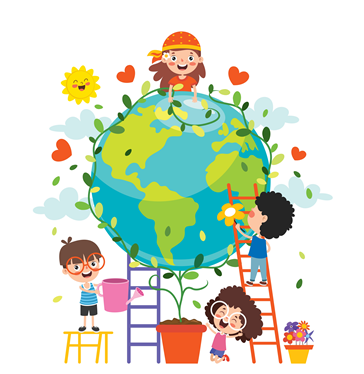You know what really stings? The fact that one of the planet’s precious resources and most important pollinator in the world, the honey bee, is facing extinction. Thankfully, young people such as Asha Mior, a 16 year old blogger, environmentalist, filmmaker, and friend of the Foundation, is leading the charge to make sure that doesn’t happen. And therein lies the key to bringing back the bee population in Canada and around the world – youth, the planet’s most precious resource of all. With World Bee Day (a UN designated day of recognition) coming on May 20, now is the perfect time to engage your children with the concept of honey bee preservation so that collectively they can pick up what we left behind, and make sure our plants (and crops) continue to grow and sustain our growing population for millennia to come.
4 World Bee Day Activity Ideas to Inspire Your Kids to Protect The Planet’s Most Precious Pollinator
1. Take the Sting Out Perceptions with an Outdoor Lesson
While diagnosed Apiphobia, the irrational fear of bees, is not too prevalent, many people do have an aversion to bees because they think they will get stung when in close proximity. This trepidation has a negative impact on the call to action needed to preserve this beneficial bug. Reeducation must begin at an early age, so that kids know that bees are to be revered and not feared.
Whether for your class or household, hold an outdoor lesson on the next beautiful May day in a setting where a bee or two may be buzzing about. Grab books from your local library and/or download content to your tablet/s beforehand so that you have the information resources you need to read aloud to your kids. Begin by removing the proverbial stinger, letting them know that in fact it’s only female bees that can sting, which right away disqualifies half of the bee population from posing a “threat”. Follow up with a note about how there are approximately 500 species that are actually stingless bees, and once again the potential is reduced even further. Long story short, the truth is that most bees won’t sting, and it’s just “bad press” that got this fear going in the first place.
With that done, you can now take the lesson into even more engaging territory, with insight into how bees contribute to society as pollinators to keep crops thriving and to encourage photosynthesis for breathable oxygen. But there is so much more. Everyone knows that honey bees produce honey (it’s right there in the name after all) but your kids may not be aware of the other important products that bees can make, including (but not exclusive to):
- Beeswax (more on this in item #4 below)
- Bee bread
- Natural health products and supplements (royal jelly, propolis and bee pollen)
- Nectar
2. Visit an Apiary
You’ll find this recommendation quite a bit on our ongoing lists of outdoor learning experiences, but bee farms bear repeating time and time again. A visit to a local apiary will provide your children with an expert guided tour and insightful look at how bees are cared for and ultimately do the good work that they do. Bee farms and apiaries will also often offer attendees the opportunity to pick up honey bee products for immediate consumption (yum!) and use back at school or home, reverberating in the hearts and minds of kids long after the visit. Perform a search for an apiary that offers tours near you, and plan your day accordingly.
3. Start a Pollinator Garden
A fun way to learn about bees while directly helping to save them is to build a sustainable home where they will thrive. View our 5-step guide to starting a pollinator garden. Concerned about having enough green space to make that happen? David Suzuki recently stated that cities are the key to reversing bee decline, with the introduction of pollinator gardens in city centers being instrumental in the process. We couldn’t agree more, which is why we have also provided a guide to protecting and enhancing pollinators in urban landscapes which is an activity that you and your kids/students can jump into this coming World Bee Day.
4. Beeswax Crafts
We touched on beeswax in item number one above, but we refuse to mind our own (get it?) and instead prefer to share a fun activity that you and your kids can partake in leading into World Bee Day – beeswax crafts!
That’s right, the honey bee byproduct is nature’s Play Doh, and can be used by creative young minds to mold figurines, ornaments, and scented crayons when combined with mould and dye. But there’s more. Beeswax can also be leveraged as a whole or as component to make useful things such as candles, lip balm, lip gloss, moisturizers, mustache wax, hair pomades, shoe and furniture polish, and even surfboard wax! Your kids or class may even consider branding their creations for sale at the next local school charity event or farmers market where artisan wares are sold.
We hope you find the above activity ideas helpful and fun, not just for World Bee Day, but for the other 364 days of the year that honey bees need your help. If you would like to know more about our work to help support Canada’s youth in sustainable community initiatives, please sign-up to become a Friend of the Foundation.







